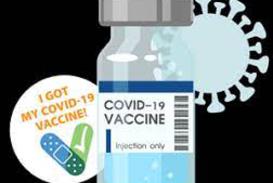HEALTHCARE PROVIDER ORGANIZATIONS INTEGRATING TELEHEALTH IN BUSINESS AND MARKETING STRATEGY
by John G. Baresky on 09/07/20
Telehealth is becoming a competitive edge for medical groups, hospitals and health systems
The benefits of telehealth for patients are well publicized. Healthcare provider organizations that rushed into telehealth as a way to continue patient care at the onset of the pandemic are now capitalizing on telehealth as a way to improve their bottom line. While telehealth, remote patient monitoring and IT technology requires financial investment, clinicians and provider organizations are realizing they can increase revenue streams and wield telehealth technology as a competitive asset.
Clinical and commercial drivers of telehealth and telemedicine adoption and enhancement across the healthcare industry:
- Expands the reach of specialists to treat more patients that are geographically dispersed in metro, rural and remote areas
- Appointment cancellations are less frequent which reduces gaps in billable hour income
- Patients and clinicians have flexibility to schedule appointments outside of standard facility operating hours
- Increased revenue streams through combining telehealth and remote monitoring capabilities
- Facilitates collaboration between clinicians and other healthcare provider organizations for advanced patient care issues including emergency care
- Greater commercial and government payer recognition and formal reimbursement guidelines are in place and being enhanced to reflect the unique aspects of telehealth care delivery
- Extends the reach of care which supports patient retention and continuity of revenue streams
Upcoming telehealth developments to look forward to
Telehealth is still in its infancy but it is growing up fast. Consumer wearables from Amazon (Halo), Apple Smart Watch and Verily Life Sciences (Alphabet/Google) and other companies is increasing in accuracy, sophistication and reliability. These can support the telehealth formula that relies on higher grade FDA-approved medical device patient monitoring resources more specifically focused in telemedicine.
The need for better broadband internet access for rural patients is being addressed. Limitations of technology use for persons without Internet who may only have mobile phones or do not have a comfortable level of experience with technology are also being recognized as areas in need of improvement.
Provider organizations, technology companies plus municipal, state and federal authorities are more aware of what technology can and cannot do in terms of telehealth and telemedicine. They are working on reducing the gaps wherever possible and supporting viable solutions that are not technology-centric to continually improve patient care.
Telehealth has transformed the future of healthcare
Investment in technology, training and administration are necessary to orchestrate this permanent addition to the traditional patient care offerings provider organizations have offered for years. It is going to be a necessary and important financial commitment for them to make. This has to be reflected in better reimbursement and the ability to offset the expenses of telehealth with the savings realized from it.
By demonstrating a high level of patient care and cost effectivness with telehealth/telemedicine, healthcare provider organizations can establish and promote their expertise
Moving forward, patients and payers are going to expect telehealth to be provided at a high level of performance in terms of outcomes, patient experience and cost efficiency. Medical groups, hospitals and health systems that are strategically integrating telehealth and telemedicine into their mainstream patient care models can outdistance their competitors. By promoting their proficiency in its use and achieving high patient satisfaction levels, they can effectively differentiate themselves from other providers. This positions them to build their reputation and generate more revenue.
Comments (0)

